Kratie
I awoke at 5:30 am so as to be absolutely certain to be on time for my bus. I felt a little sick. I had been at the office throughout the previous evening, learning traditional dances, eating, drinking, and, with keyboard accompaniment, repeatedly belting out a tacky French love song from the 1960s. I had only begun to solidify my New Year’s travel plans during lunch the previous day, biking to the waterfront to purchase passage on a boat to Kratie, halfway between Phnom Penh and Ratanakiri. In an encouraging albeit inconvenient sign of Cambodia’s development though, boat service from Phnom Penh to Kratie no longer exists. The roads have improved and busses have undercut the whole industry. Improvising, I shaved one dollar off the extravagant $9 bus fare to Kratie, by agreeing that I would travel in a bus peopled not by tourists but by locals. That last was hardly a concession. I had spent the last four weeks studiously avoiding tourists in the hopes of increasing my integration into Cambodian culture.
Arriving at the bus station, I found my ticket vendor waiting for me. He took my bag, loaded it into his car and drove me to the central market. I was confused. We exited the vehicle. He led me to a minibus and promptly disappeared. An eleven year old boy loaded my backpack onto the roof and I hopped into the overcrowded vehicle through a window. I was soon making friends with my fellow passengers as they helped me with the Khmer reading exercises in my grammar book. With some difficulty I asked them how much they had paid for their passage. Four dollars, they told me. No wonder the ticket vendor had disappeared. He’d bought my place on the minibus for half price and pocketed $4 for himself! I didn’t mind though. This is how business is done here and his crafty business skills had helped me to slip from tourist back to quasi-local foreigner status.
Seven hours later, and a stop at which I helped some farmers to remove yet another large piece of furniture from the roof of our van, we arrived in Kratie. Fending off the touts and moto-drivers with some polite Khmer, and some friendly support from my fellow passengers (“Oh yeah. This barang’s okay. He can speak Khmerm”), I had soon found a nice little guesthouse and secured a moto-driver for some sightseeing. My driver was one of two sons helping to run the family guesthouse. His name was Sua. His English was great and he was happy to help me practice my Khmer. His mother, for her part, never seemed quite to believe that I couldn’t understand her when she spoke and always greeted me with new questions that I could not answer.
My first stop with Sua was a dock from which tourists rent boats to see endangered Iriwaddy River Dolphins as they swim through the Mekong. I hired a small boat and driver for myself and was soon underway. As we floated on the Mekong, my boat driver would break the silence every thirty seconds or so, pointing and saying in perfect English, “Over there!” but knowing virtually no other vocabulary. The dolphins were spectacular. They surrounded us on all sides, occasionally hinting at their presence with a fin pushed out of the water or a head appearing twenty metres away. The hour-long ride was incredibly relaxing and the Mekong itself was beautiful.
Photographing the sunset, I was joined by another tourist, an Englishman named Ashley. He and his driver soon accompanied Sua and I to visit the nearby Pagoda on Mt. Sambok. Leaving our drivers at the base of the hill, Ashley and I climbed the steps to the Pagoda. Entering the grounds, we found some of the first paintings I had ever seen of the Khmer Buddhist interpretation of hell.
Climbing still higher, we met two monks, one of whom spoke some English. He asked us to help him in pronouncing some of the Buddhist scriptures that he had just translated from Pali into English. We chatted amicably. Though his name now escapes me, I remember that he had been a monk for over ten years and was one of the first I had met who seemed genuinely devouted to meditation, discipline, and hopefully enlightenment. I’ve since learned that the reason for which monks in Phnom Penh often seem young and slightly less interested in English than they are in their cell phones is because Phnom Penh is the center of Buddhist education. Young monks come here for the free education. The monks here in the countryside, however, seemed genuinely devouted to their scriptures, beliefs, and personal quests. In exchange for our help with his English work, this monk offered to lead us in a ten-minute meditation session. We both agreed enthusiastically, entering a small nearby shrine to learn the Apasana method of Theravada Buddhist meditation.
The meditation was restful. Our concentration was interrupted only by his mantra-like repetition of the English scripture with which we had helped him. Afterwords we walked and chatted further, learning of Buddhist beliefs and the monk’s own views on enlightenment and the Sangga (the Buddhist community of monks). Ashley and I proceeded onwards to the top of the mountain to photograph the countryside in the rapidly fading light. We climbed back down, agreeing to meet for dinner later that night.
As we left, half-an-hour behind the schedule to which Sua and I had agreed, an event with which many of you will be familiar occurred. I realized I no longer had my Tilley Hat. “Chop! Chop! (Stop!)” I shouted to Sua. “I forgot my hat,” I bashfully explained. I ran back up the mountain, taking the steps two at a time. Motioning to the workers at the entrance that I had forgotten something, I tore inside the shrine where we had meditated, searching for my hat and reminding myself constantly, “Don’t worry. Monks can’t steal. It’s one of their vows. They wouldn’t want your stupid hat anyway.” I gave up in the shrine. Climbing to the very summit, I found my hat stuffed into a crack in a fence along the side of a stone shrine. Right where I had left it while taking a photograph. Exhausted, out of breath, and feeling silly, I jogged back down the steps and hopped on the moto, looking forward to a nice cold shower before dinner.
The next morning, Sua and I departed early to make the 37km journey to Cambodia’s largest Pagoda, Wat Sambor, with time enough for me to return and find transport to Ratanakiri that afternoon. Also known as the Wat of 108 columns, this temple is quite the sight to see. Inside, I once again found the locals very appreciative of my rudimentary Khmer. They politely offered me an illustrated English biography of the Buddha as I sat in front of the central shrine admiring the beautiful paintings all around me.
Outside, a ninety year old man, who acted as the temple’s caretaker, greeted me in French. We spoke a little. Unfortunately, though he could understand me, between his thick accent and lack of teeth, I could barely make out a word he said. Sua and I soon sat down to a glass of sugar cane juice before beginning the return journey. Stopping along the way at some rapids over which had been constructed an endless series of roofed platforms for picnicking, I began to appreciate why Khmer couples and families so enjoy lounging in places like this as a type of national weekend pastime.
Unfortunately, when it came time to depart, we found an accident blocking traffic in both directions for over a hundred metres. A car and a construction truck had both almost but not quite collided on a bridge. The result was a mess in which a move by either one would almost certainly result in some serious damage to the car.
We waited for over an hour while I observed local means of shipping livestock a little more closely than I am usually able to do. Piles of chickens were stuffed onto a motorcycle, some hanging from the handlebars by their feet, all of them still alive and clucking to keep them fresh for market. The animal rights activist in me wanted to cry, especially because treating animals in this manner here is not so much an act of cruelty as necessity and convenience. The Khmer lack food. Animals are a protein source. They’re busy enough trying to survive themselves that concepts like animal cruelty can be difficult to convey in this situation and completely alien to their understanding.
I gave up hope of reaching a pickup truck before it’s departure. I needn’t have worried. Arriving back in town, both a share taxi and a pickup truck were still available to go to the capital city of Ratanakiri, Ban Lung. Given it required fewer people to depart and I would already likely be arriving long after dark, I opted for the more expensive share-taxi and returned to my guesthouse to await news that it had filled.
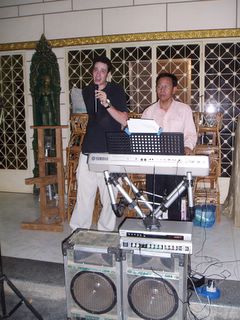

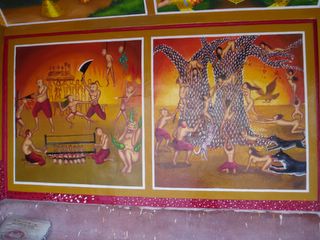
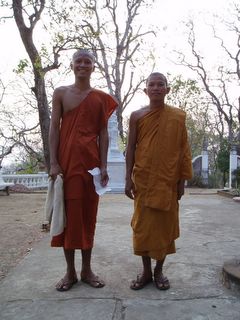
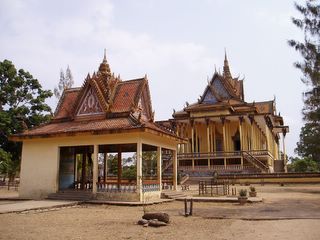
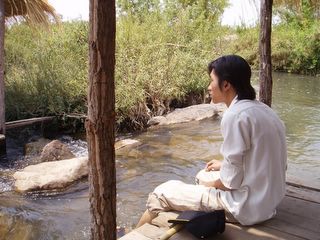

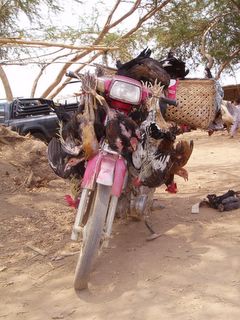

0 Comments:
Post a Comment
<< Home